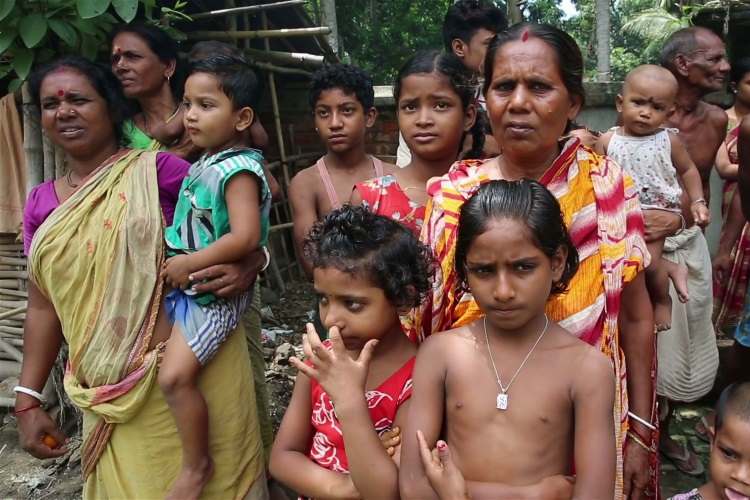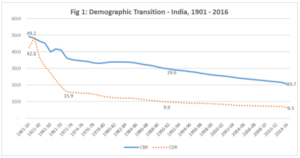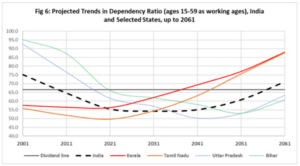
India – demographic dividend or demographic disaster: India’s economic narrative is riddled with contradictions. Despite projections of Indian economy becoming one of the three largest economies by 2030, the ground reality tells a story of underemployment and economic inequality. The optimism fuelled by institutions like Goldman Sachs, forecasting a robust growth trajectory, clashes with the lived experience of many Indians, where growth does not translate into job creation.
Global financial institutions and forecasters paint a rosy picture for India’s future. This optimism stems from its young and growing population that can fuel economic productivity. Additionally, India’s strategic location and improving business environment make it an attractive destination for foreign investment. However, this potential comes with significant challenges that need to be addressed.
To become a great economic power, India needs to address the gap between its aspirations and the realities by capitalising on its strengths like demographics and geographical location, while simultaneously tackling issues like job creation, inequality, and agricultural inefficiencies. By overcoming these challenges, India can translate its economic potential into a prosperous and inclusive future.
READ I India’s poverty reduction challenge lies beyond numbers games
Historical context and current trends
Since the year 2003, India enjoyed robust economic growth with annual rates touching 8% in some years. However, the past decade saw a decline, with growth rates dropping to around 5.8%. This downturn coincides with a global slowdown, exacerbated by the COVID-19 pandemic. While India momentarily emerged as one of the fastest-growing large economies post-pandemic, the recovery has been K-shaped, benefiting the wealthy disproportionately and leaving the middle and lower-income groups behind.
India’s economic ascent must be contextualised within the shifting sands of the global economy. As nations like China experience slowdowns, opportunities arise for India to capture a larger share of global trade and investment. However, this ambition faces competition from other emerging economies, necessitating strategic geopolitical alliances and economic reforms to enhance India’s attractiveness as a global economic player. Understanding these dynamics is crucial for India to navigate the complex web of international trade relations and economic policies.
The unemployment crisis
The Indian economy faces a stark employment challenge. Despite high GDP growth rates, job creation, especially in the non-farm sector, has been inadequate. This is a result of reduced private investment and a lack of supportive policies for labour-intensive manufacturing sectors. The Micro, Small, and Medium Enterprises (MSMEs) sector, traditionally a significant employment generator, has been hit hard by policy decisions like demonetisation and the complex GST structure, further exacerbating the employment crisis.
The growing disconnect between India’s educational outcomes and market demands poses a significant challenge to its growth aspirations. With a burgeoning youth population, India must overhaul its education system to prioritise skill development and vocational training, aligning with industry requirements. This alignment is critical to reducing the high rate of educated unemployment and ensuring that India’s demographic dividend does not turn into a demographic burden.
Demographic dividend or demographic disaster
India is currently at a critical juncture of its development trajectory with its demographic dividend tapering off. The next 15 years are crucial for capitalising on this demographic advantage before the country transitions to an aging population. The failure to create sufficient employment opportunities for the burgeoning workforce could transform the demographic dividend into a demographic disaster, undermining social and economic stability.


In the realm of economic growth, innovation and technology adoption emerge as pivotal factors. India’s policy framework should thus encourage research and development, support startups, and facilitate digital infrastructure expansion. Embracing these elements can spur job creation, enhance productivity, and position India as a leader in the global digital economy. Moreover, fostering a culture of innovation can catalyse the development of sectors crucial for India’s long-term growth.
Towards inclusive growth
For India to realise its growth potential and avoid the pitfalls of economic disparity, a multi-faceted approach is necessary. The government must prioritise labour-intensive manufacturing to create jobs for the less skilled workforce, while also fostering an environment conducive to private investment. Infrastructure development should be balanced with initiatives that directly contribute to job creation.
Addressing the alarming decline in female labour force participation is crucial. Policies that facilitate women’s entry and retention in the workforce, through safe housing, accessible childcare, and affordable transportation, are essential to harness the full potential of India’s human capital.
A critical aspect of India’s economic growth narrative is the urgent need for agricultural sector reforms. Modernising agriculture through technology and sustainable practices can significantly enhance productivity and reduce the workforce’s excessive reliance on this sector. Initiatives to diversify the rural economy and improve agribusiness value chains are essential for creating alternative employment opportunities and ensuring food security, thereby contributing to a balanced and sustainable economic growth path.
India’s growth prospects, while look promising on paper, needs a reality check. The focus should be on sustainable and inclusive economic strategies that align GDP growth with job creation and social equity. Only then can India transform its demographic potential into a tangible dividend, paving the way for a prosperous and equitable future.
